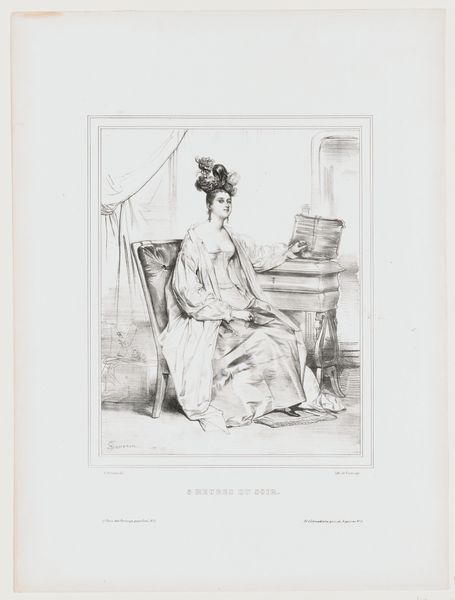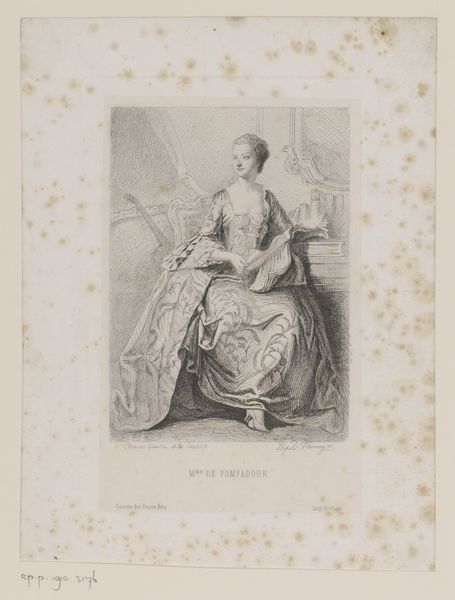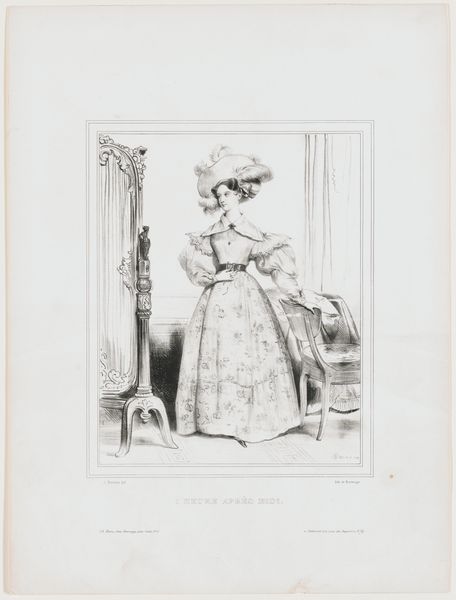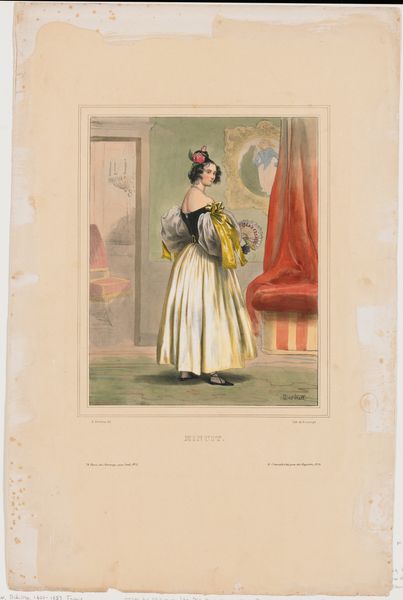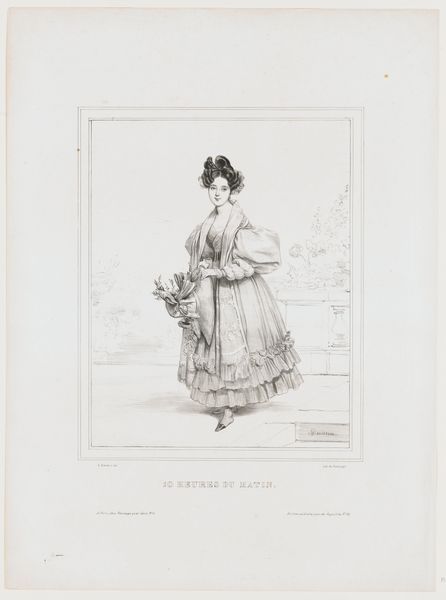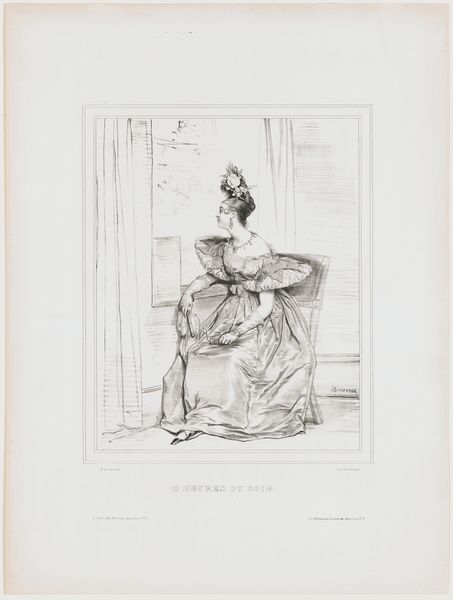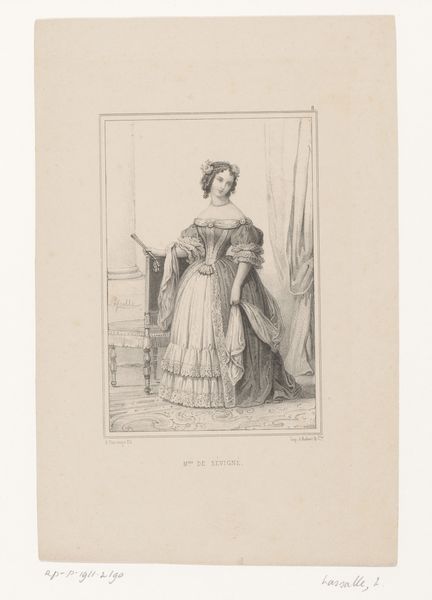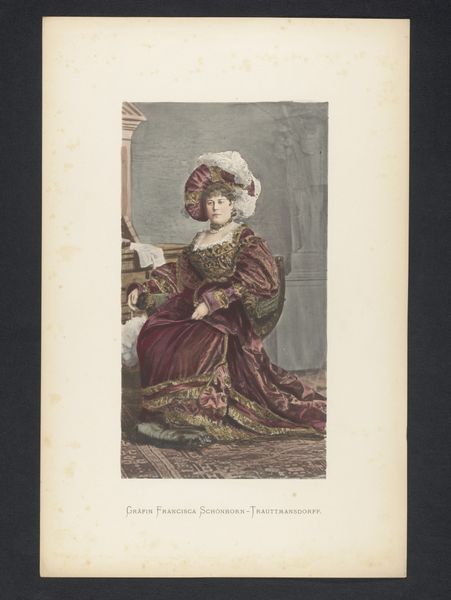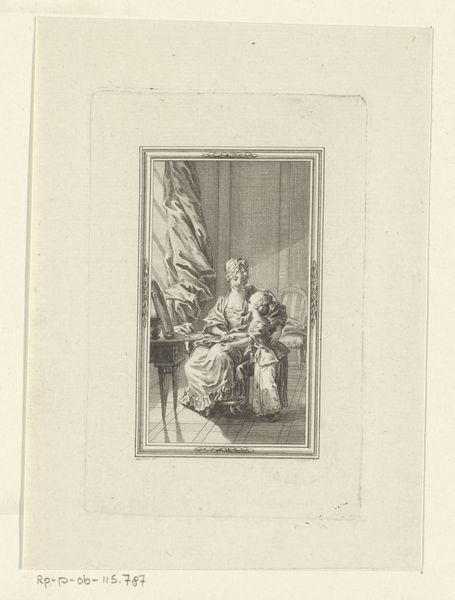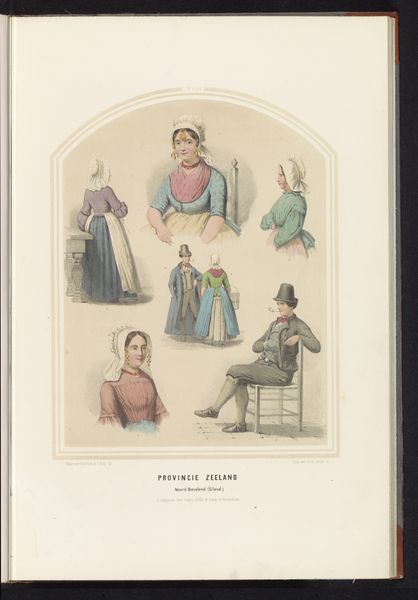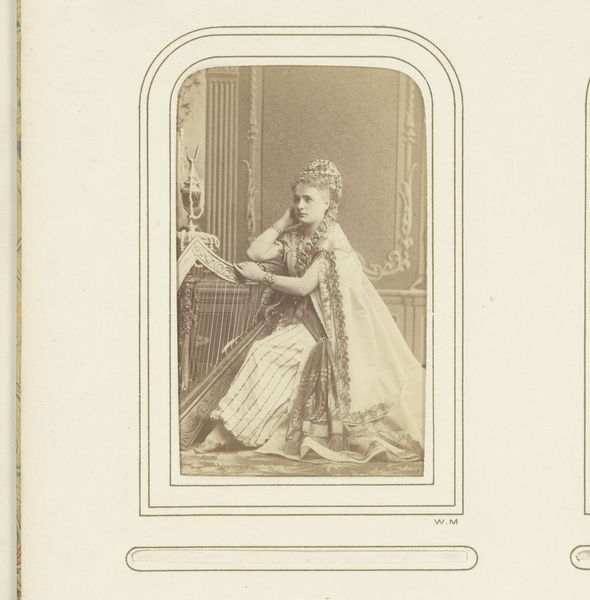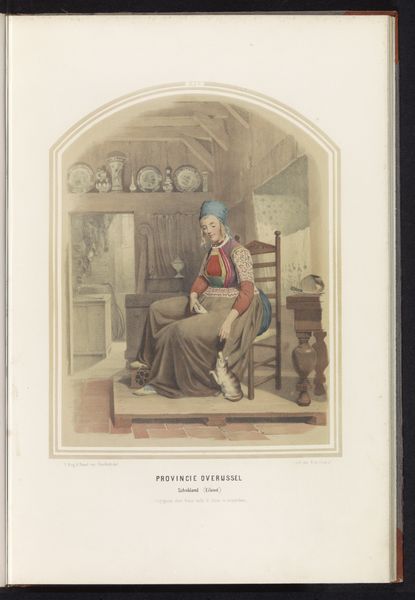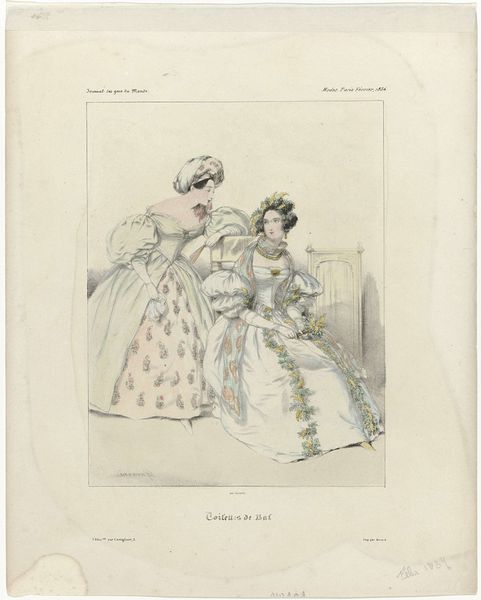
Dimensions: height 523 mm, width 350 mm
Copyright: Rijks Museum: Open Domain
Curator: Here we have a lithograph from 1857 entitled "Klederdracht van Friesland," currently held at the Rijksmuseum. It showcases a woman in traditional Frisian clothing. Editor: My initial impression is one of subdued elegance. The colour palette, particularly the deep purples and soft creams, exudes a refined and perhaps slightly melancholic atmosphere. The attention to detail in the fabric textures is quite striking. Curator: Indeed. The work provides us with insight into 19th-century European fashion and regional identities. Consider the rigid societal norms governing women's appearances during this era, and how the Frisian culture, though part of the Netherlands, maintained distinct customs reflected in their attire. The very act of documenting and portraying this ‘Klederdracht,’ this traditional clothing, speaks to the value placed on preserving cultural heritage and local distinctiveness. Editor: It prompts questions about the materials and labour involved. Who wove these intricate fabrics? What was the socio-economic context for the makers and wearers of such specialized clothing? The dress clearly suggests skilled craftsmanship, highlighting the manual work involved in creating such intricate patterns, not only in the clothing but the floral pattern on the bottom skirt. We also cannot look past the hat off to the side on the chair. It leads me to assume that the portrait wasn't actually about the woman at all, but actually about the outfit she is in, as the chair and hat indicate an absent sitter, implying her status. Curator: Excellent point. Considering the sitter, we see the layers of identity construction. The attire isn't just a set of garments; it is a powerful visual marker representing regional affiliation, social standing, and gender roles. Think about how self-presentation was mediated by cultural expectations for women, specifically concerning modesty, propriety, and community identity, the subject seems comfortable and in place here, solidifying these beliefs. Editor: The piece is rich in socio-material detail. Beyond the aesthetic elements, one can uncover evidence of regional textile economies, craft specialization, and evolving cultural values attached to handmade goods in 19th-century Europe. The texture is striking, making the painting so dynamic. Curator: Precisely. Through this work, we begin to unravel a complex narrative that intersects identity, social history, and cultural preservation. Editor: Looking closely at the details of clothing, ornament and production in "Klederdracht van Friesland" invites one to meditate on these lost craft practices.
Comments
No comments
Be the first to comment and join the conversation on the ultimate creative platform.

